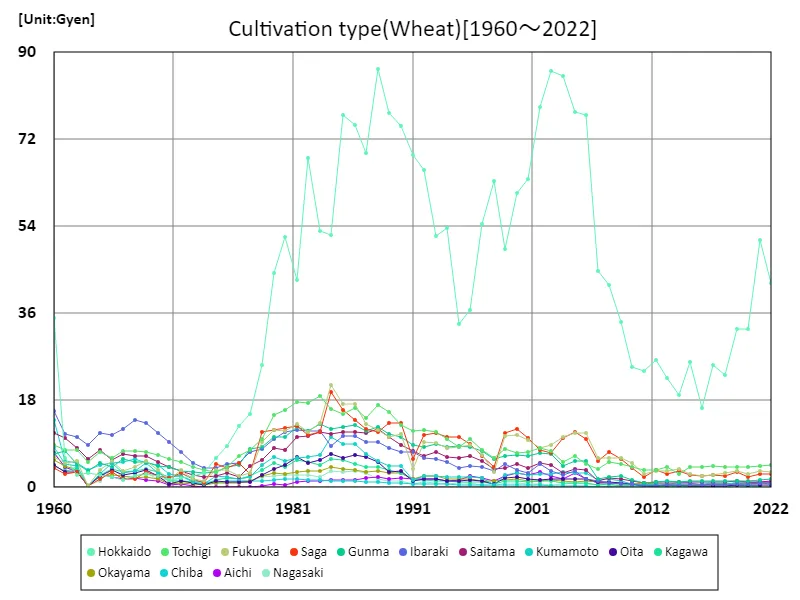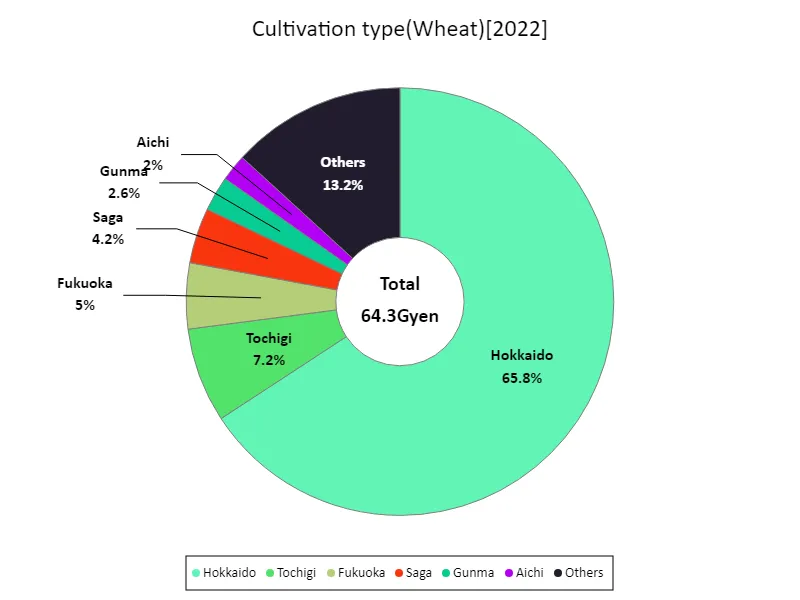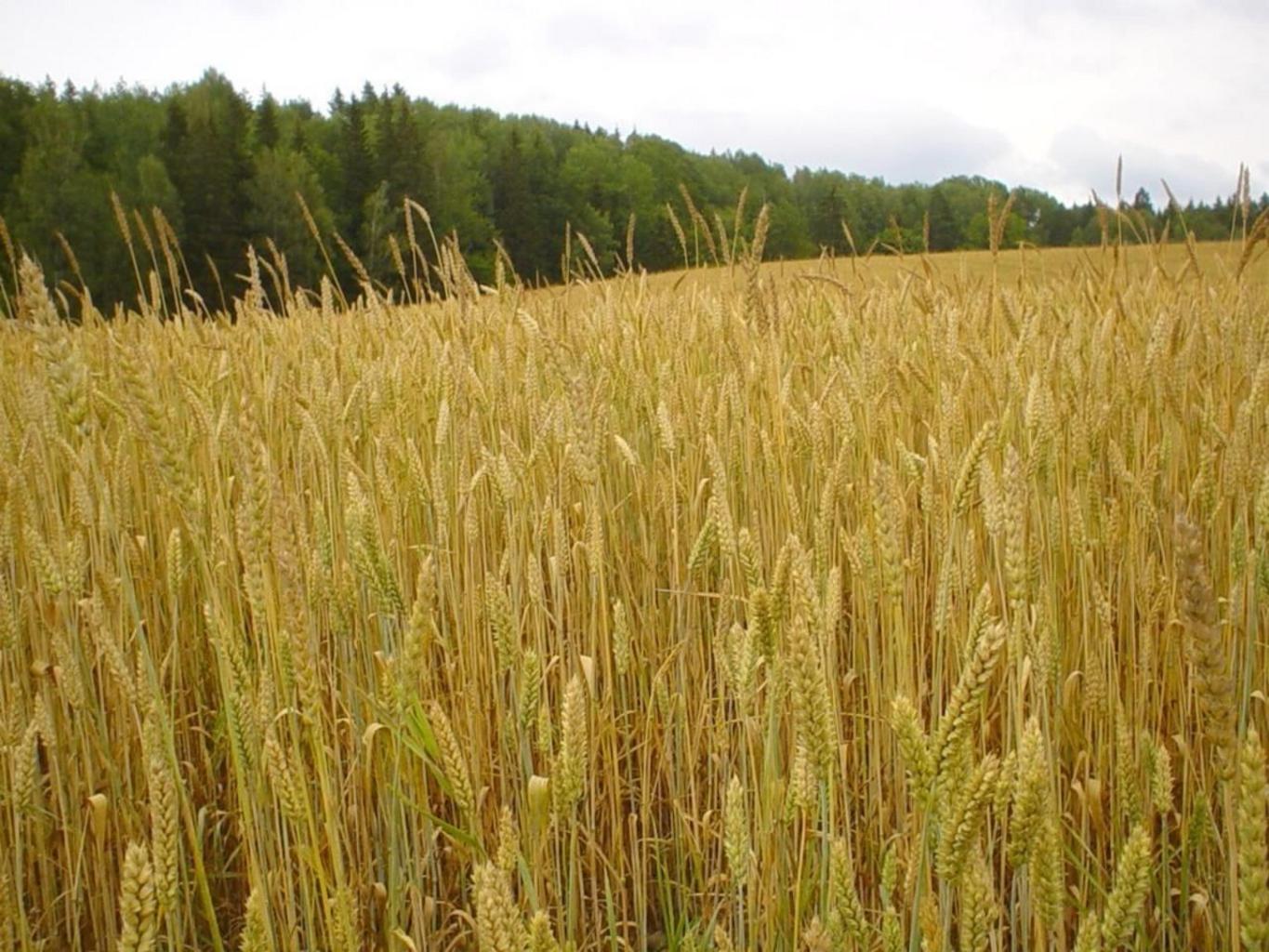Abstract
Income from cultivated wheat and barley in Japanese agriculture reached 64.7 billion yen nationwide in 2022. This figure appears to be stable given the trends over the past few years. In Japanese agriculture, arable wheat and barley is one of the important crops and demand for it is relatively stable. Although the production of arable wheat and barley depends on climatic conditions and advances in agricultural technology, stability of demand provides a reliable source of income for producers. In addition, demand for arable wheat and barley also influences other industries such as the food and sake brewing industries, contributing to the stability of agriculture as a whole.
Wheat and barley production income
Income from crop wheat and barley in Japanese agriculture changes between 1955 and 2022. At its peak in 1985, the nationwide figure was a record 215 billion yen, but has now fallen to 30.1% of that figure. The decline is due to changes in the agricultural structure and economic conditions both domestically and internationally. In recent years, the aging of farmers, a lack of successors, and intensifying market competition have had an impact on crop production and income. Changes in food supply and demand and the expansion of international trade are also affecting the demand for crops. Under these circumstances, farmers are being forced to reconsider their production techniques and business strategies, and efforts are being called for to increase income from arable wheat and grain.


The maximum is 215Gyen[1985] of Japan, and the current value is about 30.1%
Wheat and barley production income (prefectures)
Income from arable wheat and grain in Japanese agriculture has changed between 1960 and 2022. At its peak in 1988, Hokkaido recorded a high figure of 86.5 billion yen, but today it has fallen to 48.9% of that figure. The decline is due to changes in agricultural structure and economic conditions. In recent years, the aging of farmers, a lack of successors, and intensifying market competition have had an impact on crop production and income. Changes in food supply and demand and the expansion of international trade are also affecting the demand for crops. In Hokkaido, climatic conditions and land use characteristics also have an impact, resulting in fluctuations in production volume and income. Under these circumstances, farmers are being forced to reconsider their production techniques and business strategies, and efforts are being called for to increase income from arable wheat and grain.


The maximum is 86.5Gyen[1988] of Hokkaido, and the current value is about 48.9%
Wheat and barley production income (latest year, prefecture)
Based on data for 2022, income from arable wheat in Japanese agriculture will be highest in Hokkaido at 42.3 billion yen, with an average of 2.14 billion yen, and a total of 64.3 billion yen. These figures show that income from cultivated wheat varies from region to region. Additionally, average incomes are relatively low overall, meaning some areas may have high incomes while others have limited income. This trend is influenced by regional differences in climatic conditions and land use, as well as differences in farmers’ techniques and management strategies. Demand for crops such as wheat and barley has also been affected, with changes in demand from the food and sake brewing industries being reflected in incomes. Under these circumstances, farmers are trying to improve their profits by reviewing their business strategies, such as by adopting more efficient production methods and selecting varieties that meet market needs.


The maximum is 42.3Gyen of Hokkaido, the average is 2.14Gyen, and the total is 64.3Gyen



Comments